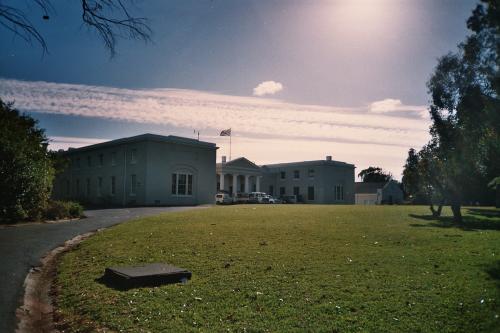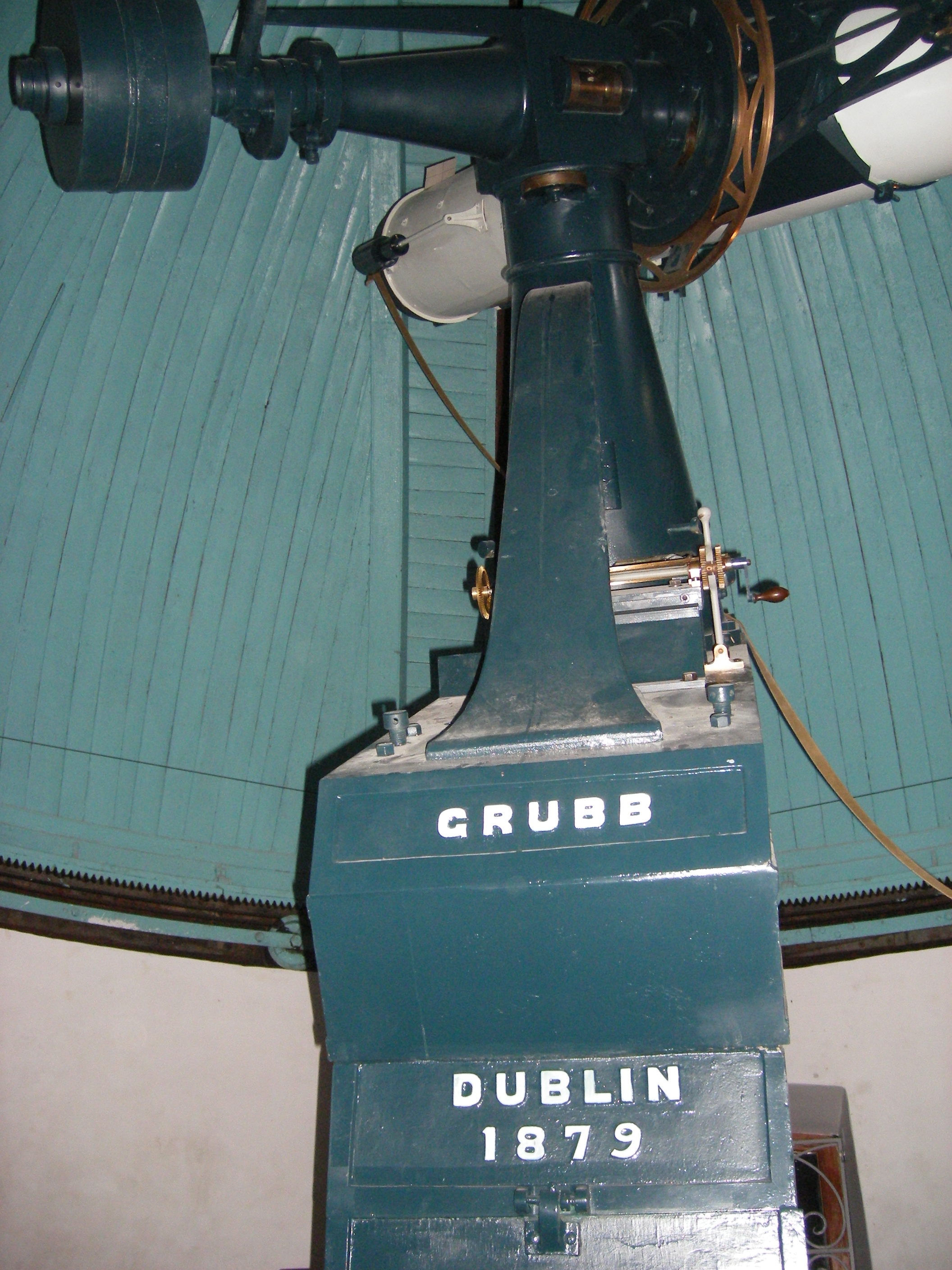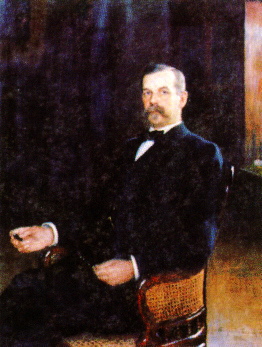|
Republic Observatory
Union Observatory, also known as Transvaal Observatory, Republic Observatory and Johannesburg Observatory (IAU code#078, 078), is a defunct astronomical observatory in Johannesburg, South Africa that operated from 1903 to 1971. It is located on Observatory Ridge, Johannesburg, Observatory Ridge, the city's highest point at 1,808 metres altitude in the suburb Observatory, Gauteng, Observatory. The observatory and its former annex, the , are known for the discovery of 6,000 double stars and for Proxima Centauri, made by astronomer Robert T. A. Innes, Robert Innes. At the observatory, 578 identifications of minor planet were made, a record number at the time. The Minor Planet Center credits the observatory as the site where 147 minor planets were List of minor planet discoverers, discovered by astronomers Harry Edwin Wood, Harry Wood, Cyril Jackson (astronomer), Cyril Jackson, Hendrik van Gent, Ernest Leonard Johnson, Ernest Johnson, Ejnar Hertzsprung, Jacobus Albertus Bruwer, Jacobu ... [...More Info...] [...Related Items...] OR: [Wikipedia] [Google] [Baidu] |
Observatory, Gauteng
Observatory is a suburb in Johannesburg's east and is located in Region E of the City of Johannesburg Metropolitan Municipality; it borders the suburbs of Houghton Estate, Cyrildene, Linksfield, Bellevue, Bellevue East and Dewetshof. History It is named for the Union Observatory established in early 1903, sited on Observatory Ridge, the city's highest point. The suburb is situated on part of an old Witwatersrand The Witwatersrand (, ; ; locally the Rand or, less commonly, the Reef) is a , north-facing scarp in South Africa. It consists of a hard, erosion-resistant quartzite metamorphic rock, over which several north-flowing rivers form waterfalls, w ... farm called ''Doornfontein''. It was established in 1903. It is a well-established suburb: Observatory Girls' Primary was founded in 1918, and Observatory Golf Course founded in 1912 is the oldest golf club in Johannesburg still operating from its original ground. The suburb housed the Yeshivah Gedolah of Johannes ... [...More Info...] [...Related Items...] OR: [Wikipedia] [Google] [Baidu] |
Ejnar Hertzsprung
Ejnar Hertzsprung (; 8 October 1873 – 21 October 1967) was a Danish chemist and astronomer. He is best remembered for his role in developing the Hertzsprung-Russell diagram of stars. Career Hertzsprung was born in Frederiksberg, Denmark, the son of Severin and Henriette. He studied chemical engineering at Copenhagen Polytechnic Institute, graduating in 1898. After spending two years working as a chemist in St. Petersburg, in 1901 he studied photochemistry at Leipzig University for a year. His father was an amateur astronomer, which led to Ejnar's interest in the subject. He began making astronomical observations in Frederiksberg in 1902, and within a few years had noticed that stars with similar spectral type could have widely different absolute magnitudes. In 1909, he took a position at the Göttingen Observatory under director Karl Schwarzschild. In 1911 Hertzsprung developed the Hertzsprung–Russell diagram, independently developed in 1913 by Henry Norris Russell. ... [...More Info...] [...Related Items...] OR: [Wikipedia] [Google] [Baidu] |
Pretoria
Pretoria ( ; ) is the Capital of South Africa, administrative capital of South Africa, serving as the seat of the Executive (government), executive branch of government, and as the host to all foreign embassies to the country. Pretoria straddles the Apies River and extends eastward into the foothills of the Magaliesberg mountains. It has a reputation as an academic city and centre of research, being home to the Tshwane University of Technology (TUT), the University of Pretoria (UP), the University of South Africa (UNISA), the Council for Scientific and Industrial Research (CSIR), and the Human Sciences Research Council. It also hosts the National Research Foundation (South Africa), National Research Foundation and the South African Bureau of Standards. Pretoria was one of the host cities of the 2010 FIFA World Cup. Pretoria is the central part of the City of Tshwane Metropolitan Municipality which was formed by the amalgamation of several former local authorities, including B ... [...More Info...] [...Related Items...] OR: [Wikipedia] [Google] [Baidu] |
Radcliffe Observatory
Radcliffe Observatory was the astronomical observatory of the University of Oxford from 1773 until 1934, when the Radcliffe Trustees sold it and built a new observatory in Pretoria, South Africa. It is a Grade I listed building. Today, the building forms part of Green Templeton College of the University of Oxford. History The observatory was founded and named after the physician John Radcliffe (1650–1714) by the Radcliffe Trustees. It was built on the suggestion of the astronomer Thomas Hornsby, who was occupying the Savilian Chair of Astronomy, following his observation of the notable transit of Venus across the sun's disc in 1769 from a room in the nearby Radcliffe Infirmary. The observatory building, at a site on Woodstock Road, commenced to designs by Henry Keene in 1772 and was completed in 1794 to the designs of James Wyatt. It has a prominent octagonal tower based on the Tower of the Winds in Athens, topped with a statue by John Bacon of Atlas holding up the Wo ... [...More Info...] [...Related Items...] OR: [Wikipedia] [Google] [Baidu] |
Sutherland, Northern Cape
Sutherland is a town with about 2,841 inhabitants in the Northern Cape province of South Africa. It lies in the western Roggeveld Mountains in the Karoo. History Sutherland was founded in 1855 as a church and market town to serve the area's sheep farmers. By 1872 the town had a population of 138 registered citizens living in 19 houses. The large Dutch Reformed church in the centre of Sutherland was built in 1899. During the Anglo Boer War the church was used as a fort by garrisoned British soldiers. During the war a number of engagements between British and Boer forces occurred in the town. In one such engagement a force of 250 Boer commandos attacked the local British garrison for 10 hours. The ruins of a fort can be found on the outskirts of town on the hill called Rebelskop. This was named after this engagement. Economy Major economic activities include tourism and sheep farming. The area includes at least twelve registered B&B's, guest houses and guest farms. The n ... [...More Info...] [...Related Items...] OR: [Wikipedia] [Google] [Baidu] |
Cape Town
Cape Town is the legislature, legislative capital city, capital of South Africa. It is the country's oldest city and the seat of the Parliament of South Africa. Cape Town is the country's List of municipalities in South Africa, second-largest city by population, after Johannesburg, and the largest city in the Western Cape. The city is part of the City of Cape Town metropolitan municipality (South Africa), metropolitan municipality. The city is known for Port of Cape Town, its harbour, its natural setting in the Cape Floristic Region, and for landmarks such as Table Mountain and Cape Point. In 2014, Cape Town was named the best place in the world to visit by ''The New York Times'', and was similarly ranked number one by ''The Daily Telegraph'' in both 2016 and 2023. Located on the shore of Table Bay, the City Bowl area of Cape Town, which contains its Cape Town CBD, central business district (CBD), is History of Cape Town, the oldest urban area in the Western Cape, with a signi ... [...More Info...] [...Related Items...] OR: [Wikipedia] [Google] [Baidu] |
South African Astronomical Observatory
The South African Astronomical Observatory (SAAO) is the national centre for optical and infrared astronomy in South Africa. It was established in 1972. The observatory is run by the National Research Foundation of South Africa. The facility's function is to conduct research in astronomy and astrophysics. The primary telescopes are located in Sutherland, which is from Observatory, Cape Town, where the headquarters is located. The SAAO has links worldwide for scientific and technological collaboration. Instrumental contributions from the South African Astronomical Observatory include the development of a spherical aberration corrector and the Southern African Large Telescope (SALT). The Noon Gun on Cape Town's Signal Hill is fired remotely by a time signal from the Observatory. History The history of the SAAO began when the Royal Observatory at the Cape of Good Hope was founded in 1820, the first scientific institution in Africa. Construction of the main buildings was c ... [...More Info...] [...Related Items...] OR: [Wikipedia] [Google] [Baidu] |
Light Pollution
Light pollution is the presence of any unwanted, inappropriate, or excessive artificial Visible spectrum, lighting. In a descriptive sense, the term ''light pollution'' refers to the effects of any poorly implemented lighting sources, during the day or night. Light pollution can be understood not only as a phenomenon resulting from a specific source or kind of pollution, but also as a contributor to the wider, collective impact of various sources of pollution. Although this type of pollution can exist throughout the day, its effects are magnified during the night with the contrast of the sky's darkness. It has been estimated that 83% of the world's people live under light-polluted skies and that 23% of the world's land area is affected by skyglow. The area affected by artificial illumination continues to increase. A major side effect of urbanization, light pollution is blamed for compromising health, disrupting ecosystems, and spoiling aesthetic environments. Studies show that ur ... [...More Info...] [...Related Items...] OR: [Wikipedia] [Google] [Baidu] |
Grubb Telescope Company
Grubb Parsons (legally 'Sir Howard Grubb, Parsons and Co. Ltd.') was a historic manufacturer of telescopes, active in the 19th and 20th centuries. They built numerous large research telescopes, including several that were (at the time of construction) the largest in the world of their type. It was founded in 1833 by Thomas Grubb as the Grubb Telescope Company, located in Dublin. Control of the company passed to his son Howard Grubb in the 1860s. They produced dozens of telescopes, including some of the largest of the 19th century, such as the Great Melbourne Telescope (a reflecting telescope) in 1868, a refractor for the Vienna Observatory in 1878, and the Greenwich 28 inch refractor in 1893. Leading up to and during the First World War (1914-18) the company produced periscopes for submarines and moved to St Albans in 1918. In 1925 the company was purchased by Charles Algernon Parsons, renamed Grubb Parsons, and moved to Newcastle upon Tyne. In the 20th century they produced l ... [...More Info...] [...Related Items...] OR: [Wikipedia] [Google] [Baidu] |
Oskar Backlund
Johan Oskar Backlund (28 April 1846 – 29 August 1916) was a Swedish-Russian astronomer. His name is sometimes given as Jöns Oskar Backlund, however even contemporary Swedish sources give "Johan". In Russia, where he spent his entire career, he is known as Oskar Andreevich Baklund (Russian: Оскар Андреевич Баклунд). Russian sources sometimes give his dates of birth and death as 16 April 1846 and 16 August 1916, since Russia still used the Julian calendar at the time. Life He was born in Länghem, in Västergötland, Sweden and graduated from Uppsala University in 1872. After getting his doctorate in 1875, he emigrated to Russia in 1876. He worked at Dorpat Observatory, in today's Tartu, Estonia, and then in 1879 worked at Pulkovo Observatory, becoming director of the observatory from 1895 until his death. He specialized in celestial mechanics, and notably worked on calculating the orbit of Comet Encke, taking into account the perturbations of various pl ... [...More Info...] [...Related Items...] OR: [Wikipedia] [Google] [Baidu] |
Monthly Notes Of The Astronomical Society Of Southern Africa , sometimes known as "monthly"
{{disambiguation ...
Monthly usually refers to the scheduling of something every month. It may also refer to: * ''The Monthly'' * ''Monthly Magazine'' * ''Monthly Review'' * ''PQ Monthly'' * ''Home Monthly'' * ''Trader Monthly'' * ''Overland Monthly'' * Menstruation Menstruation (also known as a period, among other colloquial terms) is the regular discharge of blood and Mucous membrane, mucosal tissue from the endometrium, inner lining of the uterus through the vagina. The menstrual cycle is characterized ... [...More Info...] [...Related Items...] OR: [Wikipedia] [Google] [Baidu] |
Transvaal Colony
The Transvaal Colony () was the name used to refer to the Transvaal region during the period of direct British rule and military occupation between the end of the Second Boer War in 1902 when the South African Republic was dissolved, and the establishment of the Union of South Africa in 1910. The borders of the Transvaal Colony were larger than the defeated South African Republic (which had existed from 1856 to 1902). In 1910 the entire territory became the Transvaal Province of the Union of South Africa. History Both the Boer republics, the South African Republic (ZAR) and the Orange Free State were defeated in the Anglo-Boer War and surrendered to the UK. The peace treaty (Treaty of Vereeniging) contained the following terms: # That all Burgher (Boer republics), burghers of the ZAR and Orange Free State lay down their arms and accept King Edward VII as their sovereign. # That all burghers outside the borders of the ZAR and Orange Free State, upon declaring their allegianc ... [...More Info...] [...Related Items...] OR: [Wikipedia] [Google] [Baidu] |






